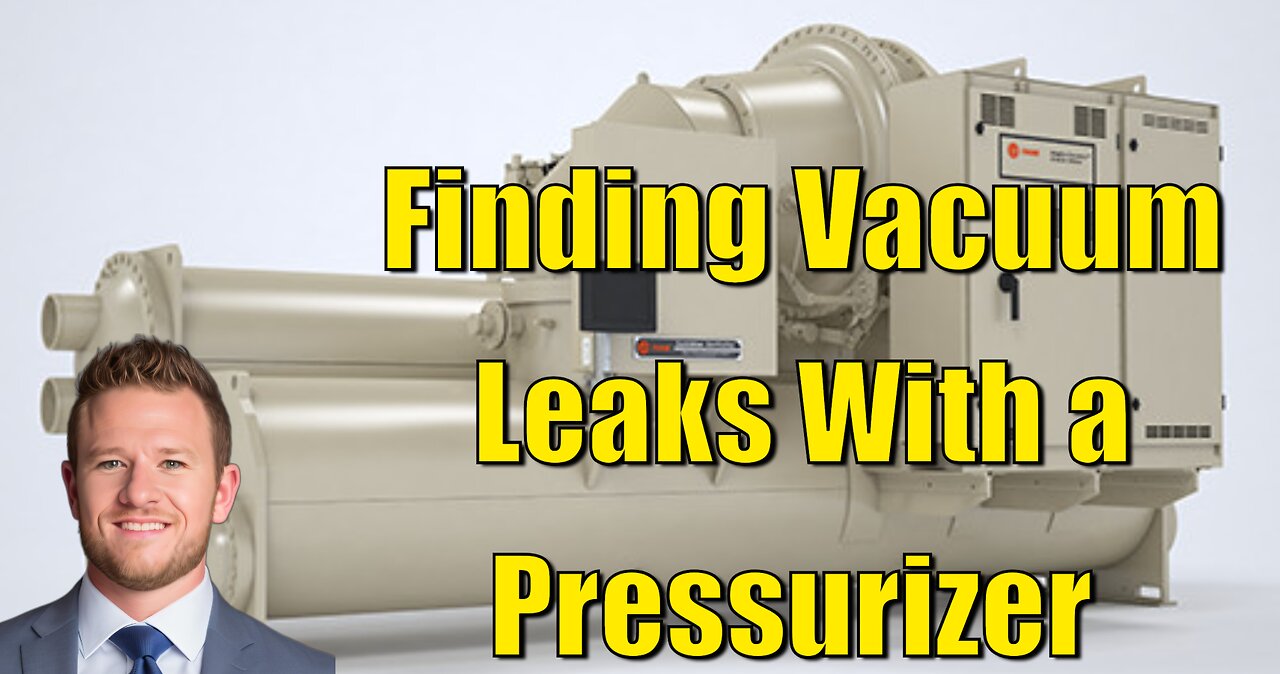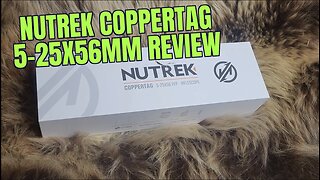Premium Only Content

Mastering Trane Chillers: Tackling Vacuum Leaks
📱Chiller Troubleshooting Group On Facebook:
www.facebook.com/groups/thechillerguys/
💵 My Website:
www.capitoldiagnostics.com
🔧 Chiller Technician File Organizing System:
https://www.capitoldiagnostics.com/products/hvac-r-technician-file-organizing-system
🪛 Diagnostic Sheets and Troubleshooting Charts:
https://www.capitoldiagnostics.com/products/diagnostic-log-sheets
🔨 Hyperwatt Pressurizer Manual:
https://drive.google.com/file/d/1sTndjk4C_ECFLthmVpijNTEUXftqfgkc/view?usp=drive_link
Let me show you the path to mastering Trane chillers.
Air is your biggest enemy in any refrigeration system. If you have high purge counts, and high pump out minutes, on your chiller it is very possible that you have substantial leaks on the machine that need to be located and repaired.
You can pull the entire charge, and pressurize the system with nitrogen, or you can use a pressurizer to do it in half the time.
This video runs through how to use a HyperWatt chiller pressurizer to pressurize a low pressure Trane centrifugal chiller.
This is the process used to find vacuum leaks on the machine that bring air into the system during operation.
Trane CVHE and CVHF chillers were depicted in the video, but this process will work on York chillers, carrier chillers, and all other low pressure centrifugal chillers that operate in a vacuum
Wether your a project manager, mechanical engineer, or beginning your career as a chiller technician, this video walks you through the basics of how to pressurize a machine so you can grow in your career.
-
 LIVE
LIVE
Mally_Mouse
21 hours agoFriend Friday!! 🎉 - Let's Play! - Microworks
362 watching -
 LIVE
LIVE
Quite Frankly
2 days agoHookah Special: Found Footage, Workplace Folly, More Cringe Music Vids (8/23/25 Re-Run)
165 watching -
 LIVE
LIVE
AlaskanBallistics
18 hours agoNutrek Optics Coppertag 5-25x56mm Review
52 watching -
 LIVE
LIVE
SavageJayGatsby
18 hours agoFriend Friday | MicroWorks | $300 Weekly Goal for Spicy Bite Saturday | 250 Follower Goal!
143 watching -
 LIVE
LIVE
The Mike Schwartz Show
3 hours agoTHE MIKE SCHWARTZ SHOW Evening Edition with Guests Dr. PETER MCCULLOUGH and JOHN LEAKE
4,160 watching -
 1:01:41
1:01:41
BonginoReport
8 hours agoAI & The Woke Indoctrination Ruining Childhood - Nightly Scroll w/ Hayley Caronia (Ep.123)
28.8K9 -
 1:17:29
1:17:29
Kim Iversen
5 hours agoTrotskyite Neocons: How MARXISTS Built the Modern GOP
70.7K67 -
 LIVE
LIVE
StoneMountain64
4 hours ago#1 Battlefield Mastery Session with the BOYS
193 watching -
 1:23:45
1:23:45
Roseanne Barr
5 hours agoDeclassifying Presidential Sex Slavery W/ Cathy O’Brien | The Roseanne Barr Podcast #113
93.5K33 -
 LIVE
LIVE
FusedAegisTV
19 hours agoHollow Knight Silksong Waiting Room ~~ pt. I
81 watching